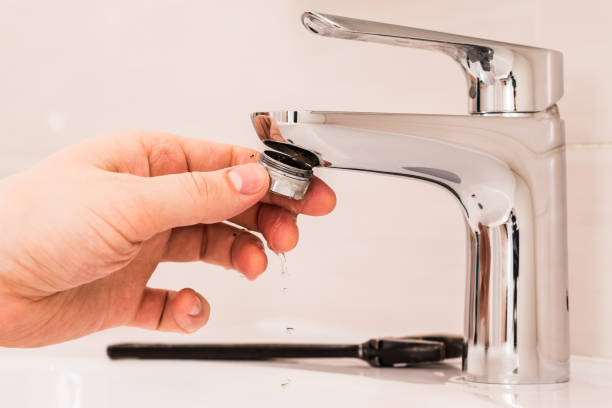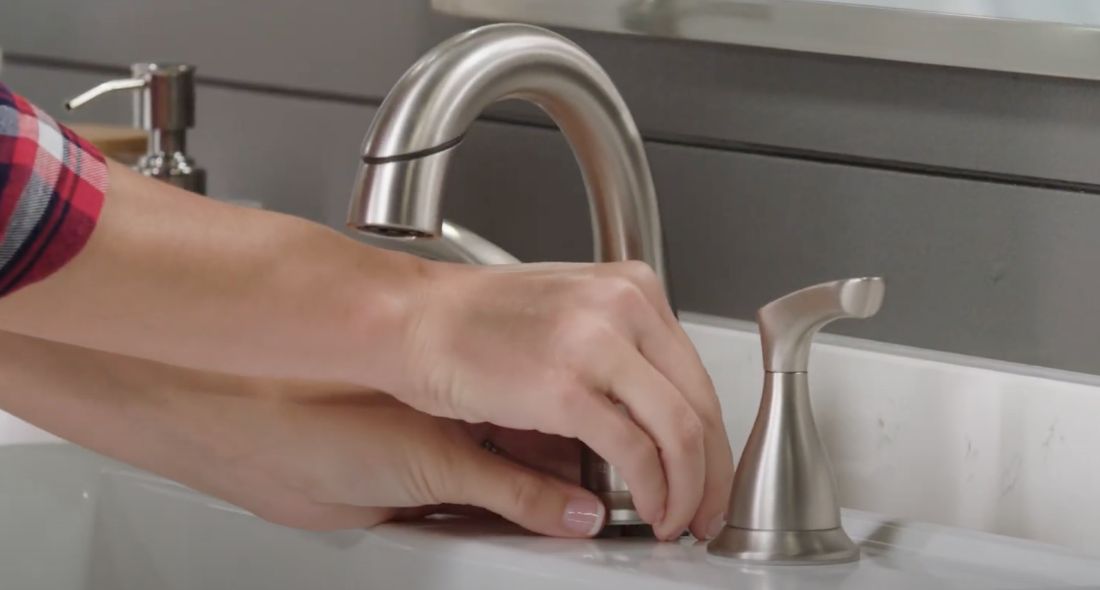What It's Needed to Deal with a Leaking Faucet
What It's Needed to Deal with a Leaking Faucet
Blog Article
Presented here underneath you will discover a bunch of outstanding advice related to Why It's Important to Fix Leaky Faucets.

Trickling taps might look like a minor hassle, however their impact surpasses simply the inconvenience of the noise. From wasting water to sustaining unnecessary economic expenses and wellness risks, disregarding a leaking tap can lead to various consequences. In this article, we'll look into why it's essential to resolve this usual family issue without delay and effectively.
Wastefulness of Water
Environmental Effect
Trickling faucets contribute substantially to water waste. According to the Epa (EPA), a single faucet trickling at one drip per second can squander greater than 3,000 gallons of water per year. This not just strains water resources but likewise affects environments and wildlife based on them.
Financial Costs
Boosted Water Costs
Past the ecological impact, leaking taps can blow up water costs significantly. The gathered wastefulness in time equates right into greater utility expenses, which could have been stayed clear of with prompt repair work.
Possible Building Damage
Additionally, long term trickling can lead to damage to fixtures and surface areas surrounding the tap. Water accumulation can cause staining, rust, and even architectural problems if left unattended, resulting in added repair work costs.
Wellness Issues
Mold and Mold Development
The constant presence of moisture from a dripping tap develops an optimal atmosphere for mold and mold growth. These fungi not just compromise indoor air quality however additionally posture health dangers, especially for people with breathing problems or allergic reactions.
Waterborne Diseases
Stagnant water in leaking faucets can become a breeding ground for microorganisms and various other pathogens, raising the threat of waterborne diseases. Pollutants such as Legionella microorganisms grow in stationary water, possibly causing significant diseases when consumed or breathed in.
DIY vs. Professional Fixing
Advantages and disadvantages of DIY Repair
While some might attempt to fix a trickling faucet themselves, DIY fixings include their very own collection of challenges. Without appropriate expertise and devices, DIY efforts can worsen the issue or lead to incomplete repairs, prolonging the problem.
Advantages of Employing a Professional Plumber
Hiring a professional plumber makes sure that the underlying cause of the leaking faucet is dealt with efficiently. Plumbing professionals have the competence and devices to diagnose and repair faucet problems effectively, conserving time and decreasing the danger of further damage.
Step-by-Step Overview to Dealing With a Dripping Faucet
Tools Required
Before trying to fix a trickling faucet, collect the needed devices, including a flexible wrench, screwdrivers, substitute parts (such as washers or cartridges), and plumber's tape.
Usual Tap Issues and Their Solutions
Recognize the type of faucet and the details problem triggering the drip. Typical issues include worn-out washers, rusty shutoff seats, or damaged O-rings. Describe maker guidelines or on-line tutorials for detailed guidance on repair services.
Safety nets
Normal Upkeep Tips
To avoid dripping taps, carry out regular upkeep such as cleaning up aerators, examining for leakages, and replacing damaged parts quickly. In addition, think about setting up water-saving devices or updating to a lot more efficient components.
Relevance of Prompt Repair Works
Addressing dripping faucets as quickly as they're observed protects against additional water waste and possible damage, eventually saving both water and cash in the future.
Impact on Building Worth
Perception of Well-Maintained Home
Maintaining a building in good condition, consisting of resolving upkeep concerns like trickling faucets, enhances its viewed value and desirability amongst potential customers or occupants.
Influence on Resale Worth
Qualities with well-kept plumbing fixtures, consisting of faucets, command greater resale values in the property market. Dealing with dripping taps can add to a positive impact during residential or commercial property examinations and negotiations.
Environmental Obligation
Specific Payment to Preservation
Taking responsibility for repairing trickling faucets lines up with broader efforts toward water conservation and environmental sustainability. Every person's activities collectively make a substantial impact on maintaining priceless resources.
Lasting Living Practices
By prioritizing timely fixings and adopting water-saving habits, people add to lasting living methods that benefit both existing and future generations.
Final thought
Attending to a dripping tap exceeds mere ease; it's a crucial action toward preserving water, decreasing economic costs, and guarding health and property. Whether with do it yourself repair work or expert help, taking action to take care of trickling taps is a small yet impactful way to advertise accountable stewardship of sources and add to a healthier, more lasting future.
Why Are My Faucets Dripping (And Can I Fix it Myself)?
Causes of a Dripping or Leaking Faucet
Whether you’re hearing drops of water falling and hitting a sink, or noticing water ooze out from the base of the spout, you shouldn’t ignore a dripping or leaking faucet. And, the good news is, sometimes you can fix the problem yourself.
In this article, we’ll review a few common causes of dripping and leaky. We’ll also walk you through some basic ways to find the problem and handle it without calling anyone — and let you know when to call in a pro.
But, no matter what the cause, or whether you can handle it on your own, the sooner you address it, the better.
Each drip may be a tiny amount of water. But, they all add up quickly. According to the U.S. Geological Survey, one faucet losing one drop every 20 seconds — five a minute — wastes around a liter of water every day, and 173 gallons a year.
Add in more than one in your house, and it’s a lot of water to waste. So, we’ll help you get to the bottom of things quickly.
Four Reasons Your Faucet May Be Dripping
Aerator is Damaged or Unseated Valve Seat is Corroded O Ring is Loose or Worn Out Part of the Assembly is Loose Aerator is Damaged or Unseated
If you unscrew the end of your faucet, you’ll find the aerator. It’s the little stem piece with a screen on it that shuts off the water circulation.
If it’s damaged, or if it’s not sitting right, it will allow water to pass through.
Valve Seat is Corroded
Next is the valve seat, which is connected to the washer. If the washer wasn’t in place correctly, then it could have ground against the seat. Over time, this damages the valve seat.
The problem could also be corrosion: Over time, the part has worn out, and it’s now allowing water to pass through.
O Ring is Loose or Worn Out
Since the o ring is only a small rubber gasket, it’s a common reason why the faucet is dripping. You’ll find it at the base of the faucet, and it’s there to keep water from coming out where it’s not supposed to.
However, it’s common for the o ring to wear out over time. When it does, you’ll notice a drip.
Part of the Assembly is Loose
So far, we’ve looked at a few small, specific parts. But, the problem could be anywhere in the assembly if something’s out of place.
Even if a part isn’t damaged, over time, it may have become loose or dislodged. It could be the parts we mentioned, or the aerator at the tip of the faucet, the stem itself,
Can I Fix a Leaky Faucet Myself?
Depending on the problem, and how handy you are, there’s a chance you can fix a leaky faucet without calling a professional. But, you do run the risk of making the problem worse.
If it’s a small drip, you can certainly try a few troubleshooting tactics. We’ll walk you through them in a moment.
But, no matter what, your first step should be shutting off the water coming into the faucet. You should find a shutoff valve under the sink on the pipes leading to it. Turn each one clockwise until they close tightly.
Next, make sure you have the right tools for whatever you’re attempting. It’s tempting to make do with what you have. But, you need the right ones for a reason: You’re often dealing with small parts that can break if you handle them carelessly.
If you’re feeling confident, here are some places to start.
Items Near the Tip of the Faucet
A few of the parts we mentioned — particularly the valve seat and washer — are located at the tip of the faucet where the water comes out. They’re easy to access, making it a good place to start.
Check the O Ring
To check the o ring, you’ll need to take off the spout at the base. It’s easiest on kitchen sinks with long spouts, versus the smaller, bulkier base on most bathroom sinks.
Either way, this can be tricky, so do it carefully and don’t force anything. If it’s not coming right off, you’re much better off calling in a pro than possibly breaking something.
For a kitchen sink, there’s usually a nut or coupling assembly at the base of the spout. These often slide off easily without using any tools.
Once you’ve disassembled those parts, gently but forcefully twist off the spout.
Then, you can see the o rings. There should be two of the rubber gaskets on the base. If they look worn or damaged, replace them, and see if that solves the problem.

I recently found that piece of writing on Water Dripping from Faucet: Why and How to Fix when exploring the internet. If you enjoyed reading our blog posting if you please remember to share it. Thank you for your time. Please come by our blog back soon.
Report this page